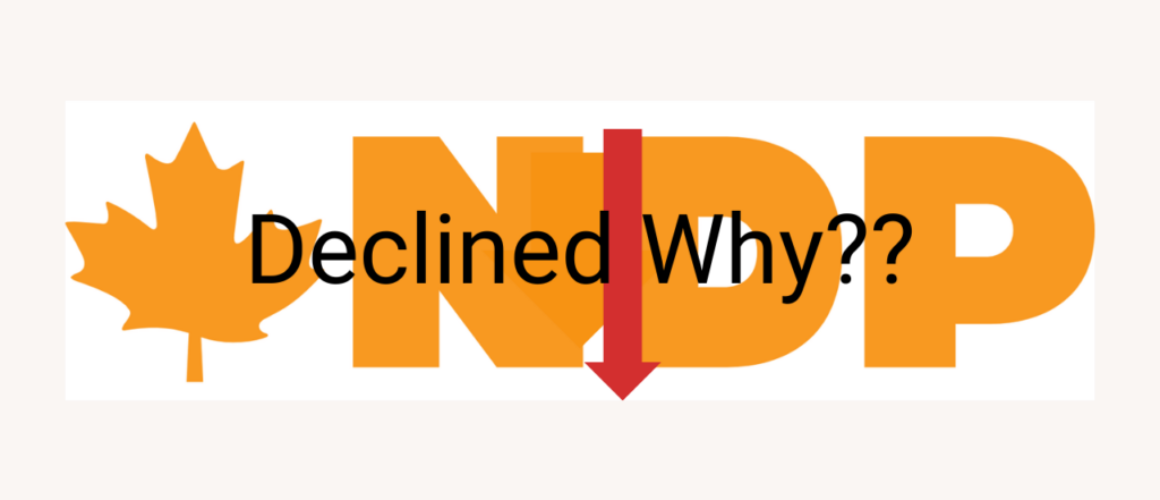The Decline of the NDP: Analyzing the Party’s Electoral Setback

Once a beacon of progressive ideals in Canadian federal politics, the New Democratic Party (NDP) now faces an existential crisis. In the 2025 federal elections, the party suffered one of its most significant losses in recent decades—losing both votes and seats across critical battlegrounds. While the Liberals and Conservatives have continued to polarize the electorate, the NDP has found itself squeezed out of relevance, with supporters asking: what went wrong?
This article dives deep into the factors behind the NDP’s electoral decline, exploring internal challenges, shifting voter sentiments, and the broader structural limitations of Canada’s political landscape. More importantly, it reflects on what the future might look like for a party at a critical crossroads.
Leadership, Messaging, and Identity Crisis
The leadership of Jagmeet Singh, once hailed as a revitalizing force, has increasingly come under scrutiny. Singh brought charisma and modern appeal to the NDP—reaching younger, diverse audiences through platforms like TikTok and Instagram. But critics argue that the social media savvy masked a lack of clear, actionable policy direction.
In the 2025 campaign, the NDP struggled to distinguish itself:
- Too close to Liberals: Singh’s alliance with the Trudeau government, especially during the 2021–2023 minority term, blurred lines between NDP ideals and Liberal compromises.
- Lack of policy boldness: Unlike past eras—such as under Tommy Douglas or Jack Layton—the NDP failed to present a bold, transformative vision on healthcare, housing, or economic justice.
- Soft performance in debates: While Singh remained popular personally, his debate performances lacked the force needed to galvanize undecided voters.
As a result, many traditional NDP voters migrated either to the Liberals for “winnability” or to the Greens and fringe progressive parties for ideological clarity.
Structural Challenges and Electoral Disadvantages
Canada’s electoral system—first-past-the-post—has long penalized third parties, and the NDP is no exception. Despite earning nearly 18% of the popular vote, the party secured just a fraction of that in parliamentary seats.
Key structural issues:
- Urban concentration: The NDP performs well in urban ridings (Toronto, Vancouver), but lacks a strong rural base.
- Vote-splitting with Greens: In multiple ridings, progressive vote splits handed seats to Conservatives.
- Media bandwidth: Much of the media focus remained on Trudeau vs. Carney vs. Poilievre, sidelining the NDP’s platform.
In short, even a well-run campaign would’ve struggled against systemic electoral disadvantages without broader reform.
Internal Divisions and Policy Confusion
Over the past two years, tensions within the party have surfaced:
- Progressive vs. pragmatic factions: Some members pushed for more radical proposals (UBI, national rent control), while others favored centrist cooperation.
- Labour roots vs. urban activism: Traditional labor-focused supporters in Ontario and the Prairies have become disconnected from the NDP’s newer urban activist base.
- Messaging inconsistency: On issues like Israel-Palestine, policing, and Indigenous sovereignty, the NDP faced internal contradictions that eroded public trust.
With no unified vision, the party appeared reactive rather than proactive—further damaging its credibility.
What Comes Next: Rebirth or Relevance Loss?
Despite its setbacks, the NDP has deep institutional history, a loyal grassroots base, and strong provincial wings (notably in BC and Alberta). But to survive federally, the party needs a serious recalibration:
- Leadership Change? – Jagmeet Singh has hinted he may step down. A leadership race could inject new energy but might also deepen internal rifts.
- Grassroots Rebuilding – Investing in community organizing, union partnerships, and policy listening tours could reconnect the party with its base.
- Policy Innovation – The NDP needs a signature issue—like pharmacare, climate justice, or tech regulation—to reassert its relevance and ideology.
- Electoral Reform Advocacy – Supporting proportional representation not only aligns with NDP values but could be key to long-term survival.
Conclusion
The NDP’s decline in 2025 is not a death sentence—but it is a reckoning. In a world increasingly defined by polarization, echo chambers, and populist extremes, the challenge for the NDP is to craft a voice that’s not just different—but necessary.
Whether it rebounds or fades further will depend on its willingness to confront its internal contradictions and once again stand boldly for the progressive values it was built upon.